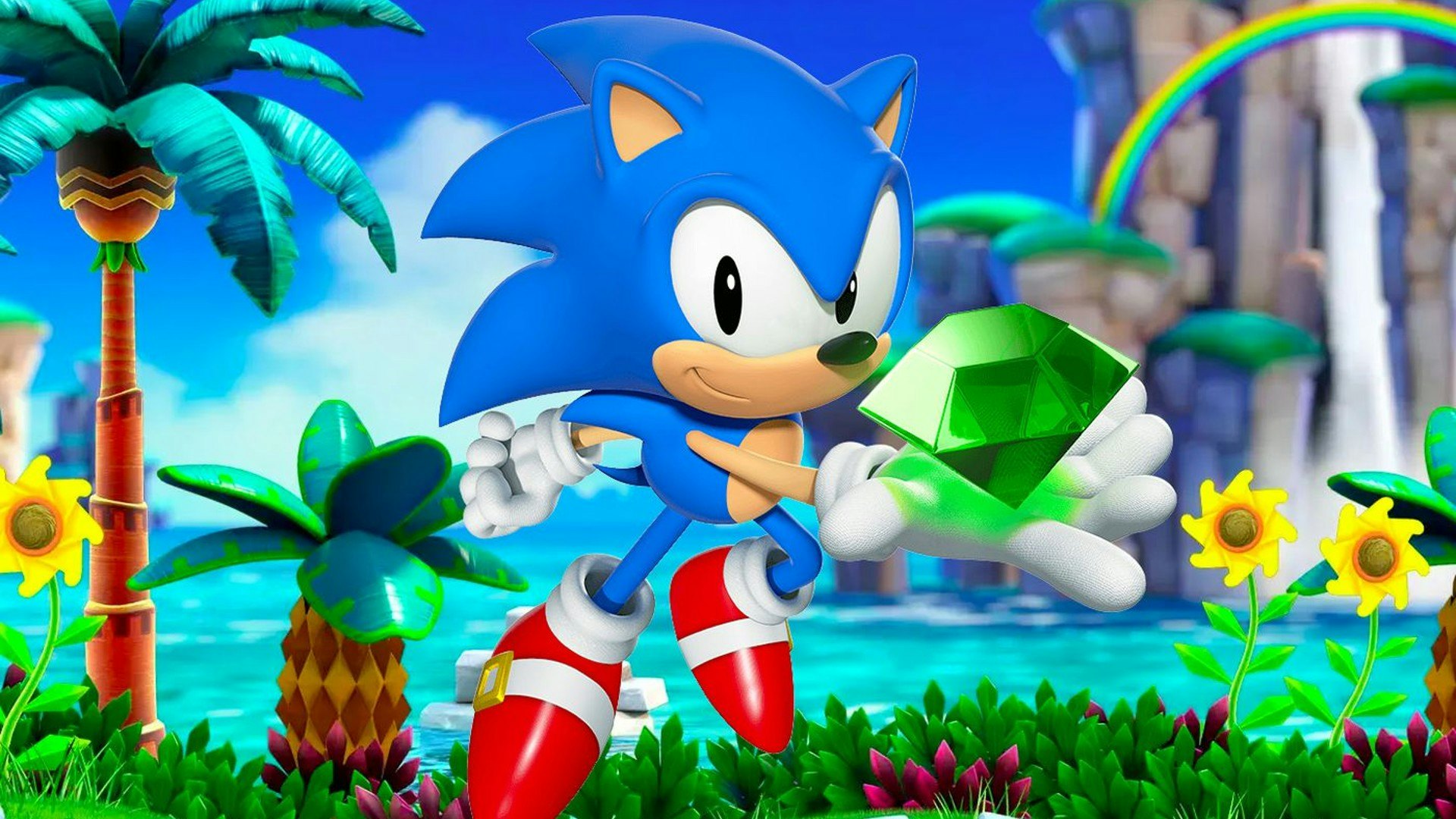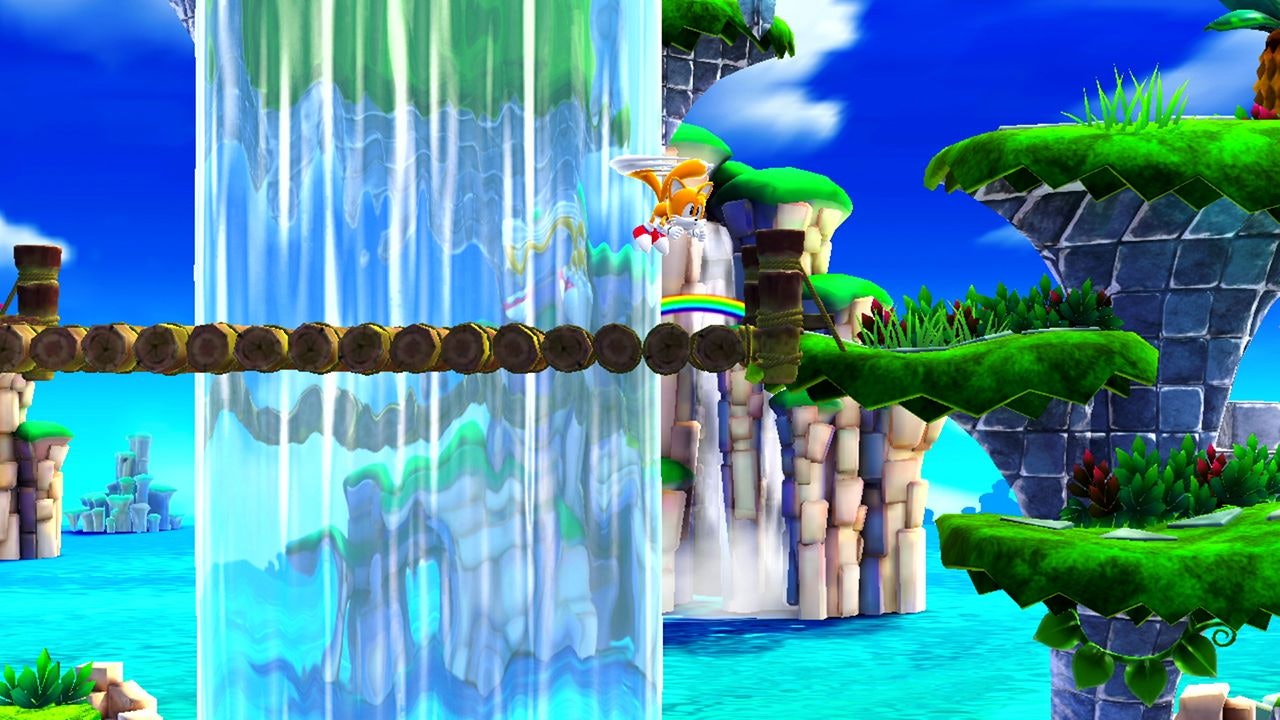
Sonic Superstars was a big surprise when it was announced at Summer Game Fest. That’s because it’s a return to classic side-scroller form, and because it’s the first game in the franchise to feature four-player co-op. After going hands-on and talking to Sonic Team head Takashi Iizuka, it’s clear that Sega sees Superstars as an “evolution” of the classic formula.
While I didn’t get to test out co-op, the demo consisted of two zones, Bridge Island and Speed Jungle. There are four playable characters, each with their own quirks and controls, such as Tails flying or Knuckles gliding.
The thing that’s immediately apparent from jumping into Superstars is how much it feels and controls like the old Genesis classics. Superstars is all about momentum and physics, and levels sometimes play with perspective, offering paths into the background and foreground. There’s also a host of unique little platforming gimmicks, like using vines to launch yourself into the air. Each zone we played had two levels, and all four felt distinct in terms of design and challenge.
“We wanted this to be a classic Sonic gameplay ‘renewal,’ and we wanted to present that to people with a different look,” says Iizuka. “Before we did anything else, before we made any of the game, we had to make sure the game felt exactly as it used to.”

Despite its similarity to past games, Superstars isn’t without its innovations. Chaos Emeralds now grant abilities that change how your characters interact with the environment. My demo allowed me to test out the Water ability, which allows you to move up waterfalls. It’s an interesting option that forces you to reconsider how you can traverse a level, now accounting for some added verticality.
Each time you collect a Chaos Emerald, you’ll get a new power, and Iizuka hopes these powers add a “fresh” feeling that helps elevate Superstars beyond a retro throwback.
There’s a certain nostalgic feel about the sprite-based art of games like Sonic Mania, but I was impressed by the new visual style of Superstars. Both levels were lavishly designed with bright colors and tons of background details. Seeing Superstars in motion really accentuates how the fluid animations enhance the overall feel.

According to Iizuka, the style switch was done to appeal to a wider audience, bringing in players that might see pixel art as a “retro game” and skip it because of that. Sonic’s original character designer, Naoto Oshima, has returned for the project, helping to update the look of returning characters like Fang. (Oshima has also created a brand new character that Sega will be showing off at a later date.)
I walked away from my time with Sonic Superstars not blown away, but definitely eager to see more. The new title absolutely nails its aesthetic and feels like the Genesis classics in the best way — but the real test will be how much variety the new Chaos Emerald abilities add. The last few years have shown that Sonic Team is more willing to experiment, and that alone makes me hope the studio can push even further with Superstars.
This is an evolution, but as Iizuka sees it, classic Sonic won’t stop here.
“The modern series is going to continue to evolve and build on Frontiers, but the classic series, as well, will continue to evolve and exist,” says Iizuka. “Superstars really is that evolution and the new format for us to continue building on top of each other.”







